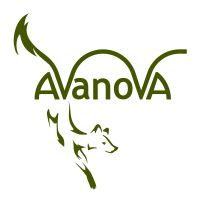Awakening old jeans to new life
How to implement a business model, be creative at the same time, develop beautiful products and even do something beneficial for the environment? I think the artists from Atelier MeJe are on the right track!

Again, I would like to introduce one of our amazing partners! Atelier MeJe and their wonderful bags, made of discarded jeans. With their enthusiasm for a cleaner environment, love for the creative process and a sense for aesthetic and beautiful design, the young artists of Atelier MeJe hit the spot.
I am well aware, with this article of 1200+ words (at least in the German version, in English it may be a bit shorter... or longer), the old writing frenzy got the better of me again. So the essence of it in short:
Discarding tons of old jeans is bad.
Turning them into super cool hand bags is good.
There is a creative process, and fun at work.
Eventually every bag is unique. And made in Vietnam.
Available in Europe: At Avanova :)
So much for the short version, but if you like to know the long story, just grab a cup of tea, make yourself comfortable and enjoy the story of Atelier MeJe:
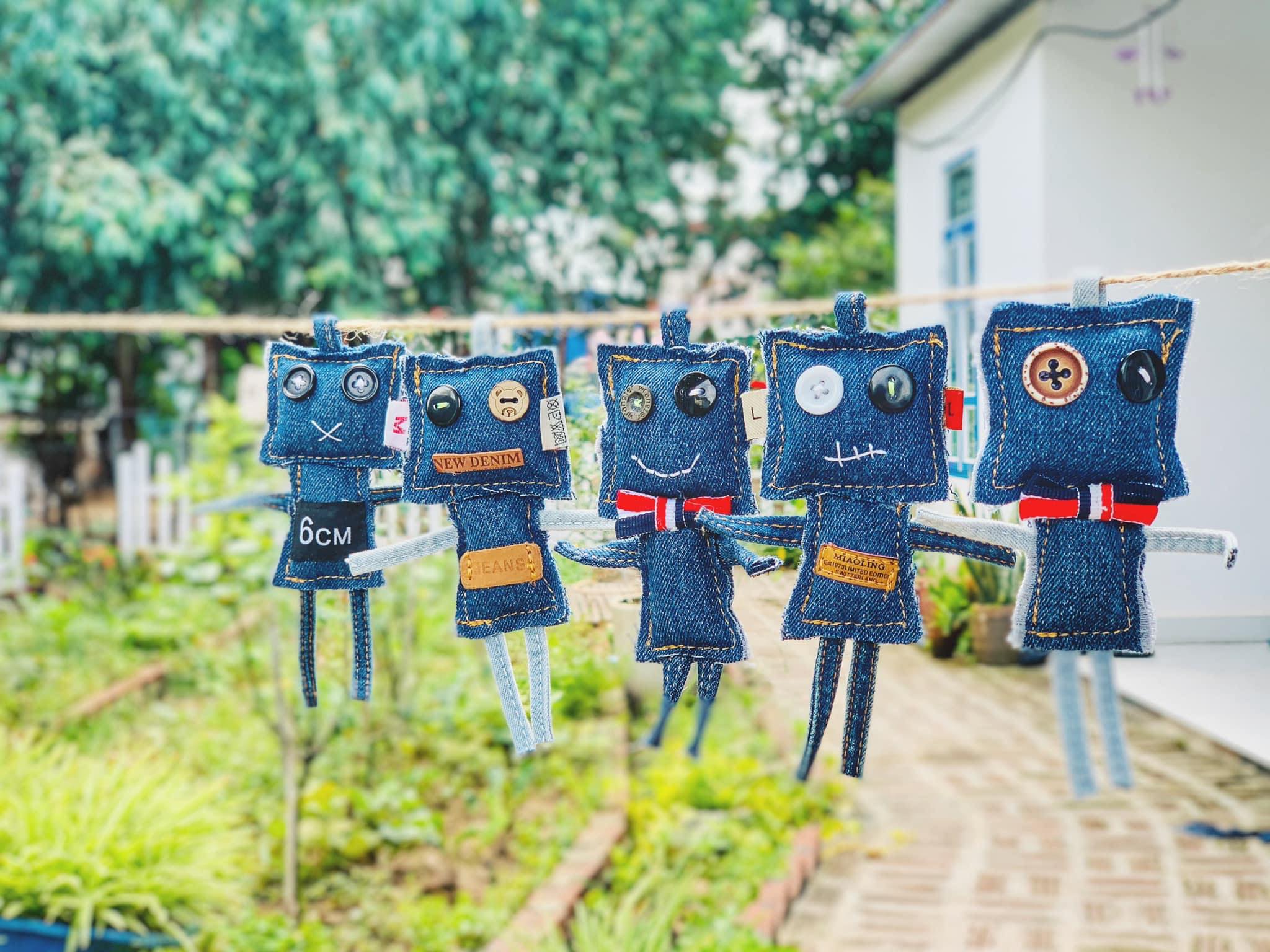
Fast fashion and climate change
During the last years, the impact of climate change on the environment and us humans became more and more obvious. The reckless exploitation of our world and its resources is more often taking a heavy toll on the people living in the affected regions - and these regions are growing in size. One serious factor of pollution leading to climate catastrophes is so called fast fashion - clothing trends that change in a very fast pace.
buy - wear - discard
Since the fast fashion wave started, the textile industry climbed to rank 2 of those industries with the most negative impact on our environment. To make a pair of jeans for example, you need thousands of liters of water. To dye these jeans blue, thousands more. Annually, the fashion industry uses up billions of liters of clean water, returning it to rivers and the sea saturated with caustic pickling solutions and toxic dyes. These toxins enter the food chain and eventually end up in our lunch.
And what happens to these jeans when they are not worn anymore?
Environment protection organizations come up with shocking numbers: 500 million metric tons (!!) of clothing are annually discarded in the world. 1.5 million metric tons end up in our oceans as micro fibers. 84% of the discarded clothing is destroyed right away. And this while the CO2 output during the production process accounts for 10% of the worlds greenhouse gas emission.
The harmful phenomenon that is fast fashion is increasingly seen as important topic by environment organizations, companies and individuals.
Jeans and their significance in young urban fashion
The rhythm of modern city life is subject to a continuous change of urban trends, fueling the need for new, fresh fashion. Fashion, used as a statement by young people to point out their personality, to show their "this is me".
Jeans are extremely popular in this context, because not only they are available in all styles from semi-formal to freaky-fancy. Also, denim as a material tends to develop its very own character.
Almost everybody has at least one pair of jeans in their wardrobe, so you can imagine how big their impact on fashion waste and pollution is.
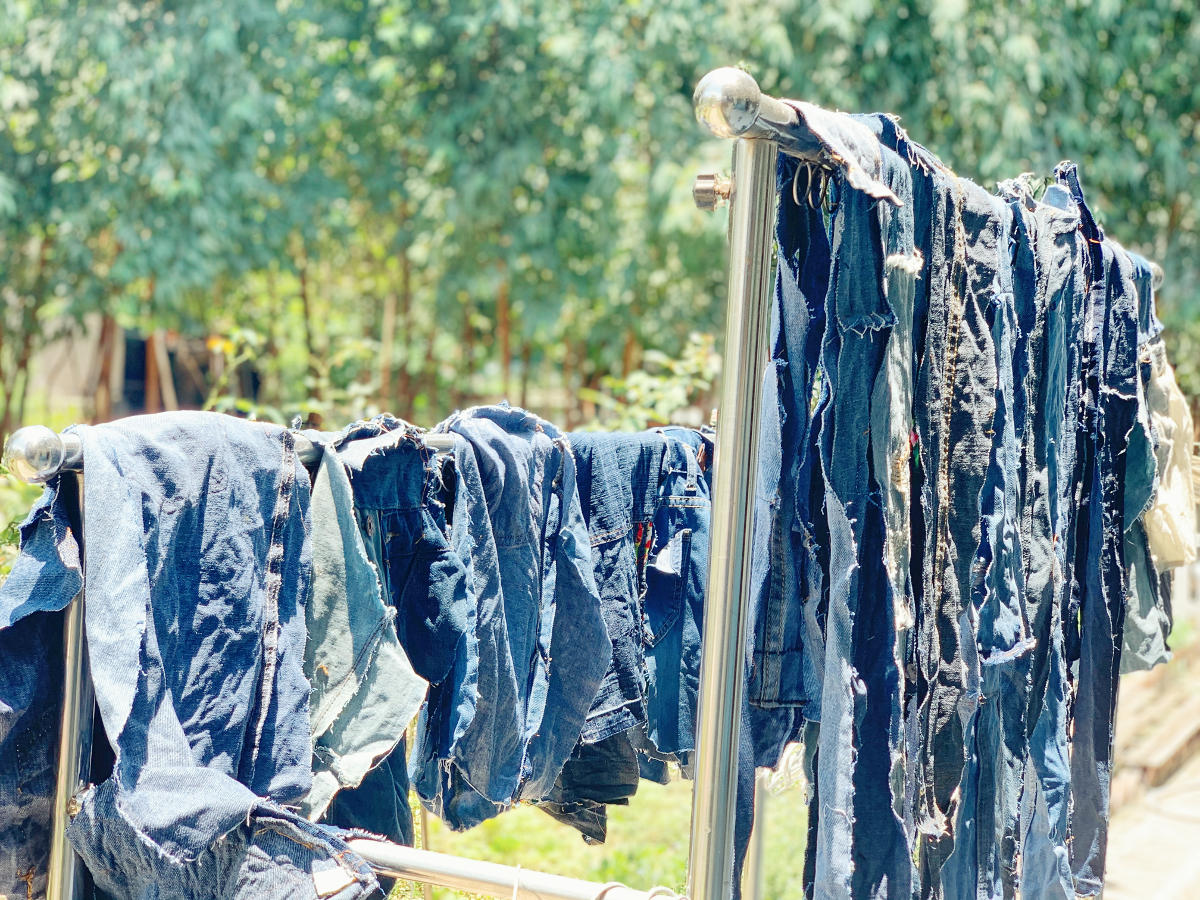
Awareness, recycling, upcycling...
...and what role Atelier MeJe plays in this
A small, yet constantly growing percentage of young people in the urban areas is actually caring about the world in which we live. Some buy fashion second hand at thrift stores or flea markets, some reduce plastic waste and engage in various other ways to reduce negative impact on the environment.
Yen and Ha from Atelier MeJe belong to these people.
And how do they tackle the problem?
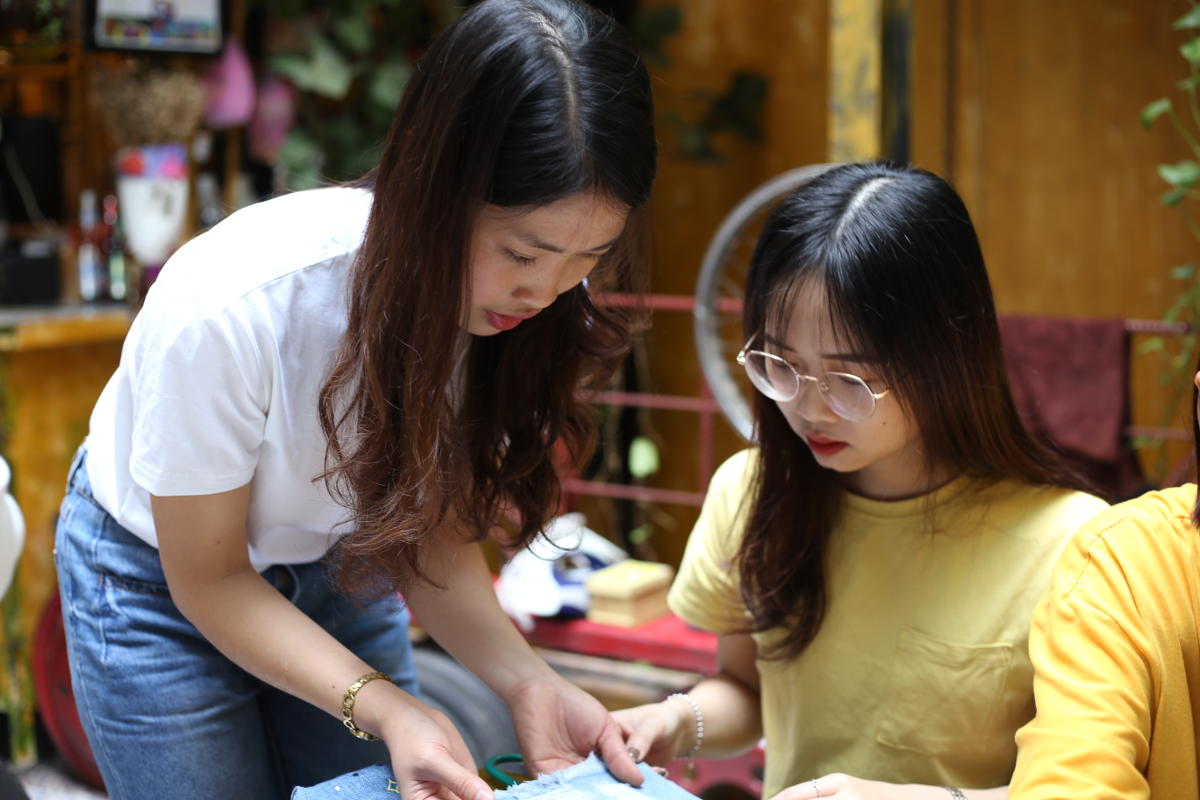
Denim is a popular material in the textile industry - it is robust, durable and opens up a plethora of options for designers. The original indigo-blue hue dominating jeans for the last decades got replaced by a vast palette of all colors to cater to the needs of the many different customers.
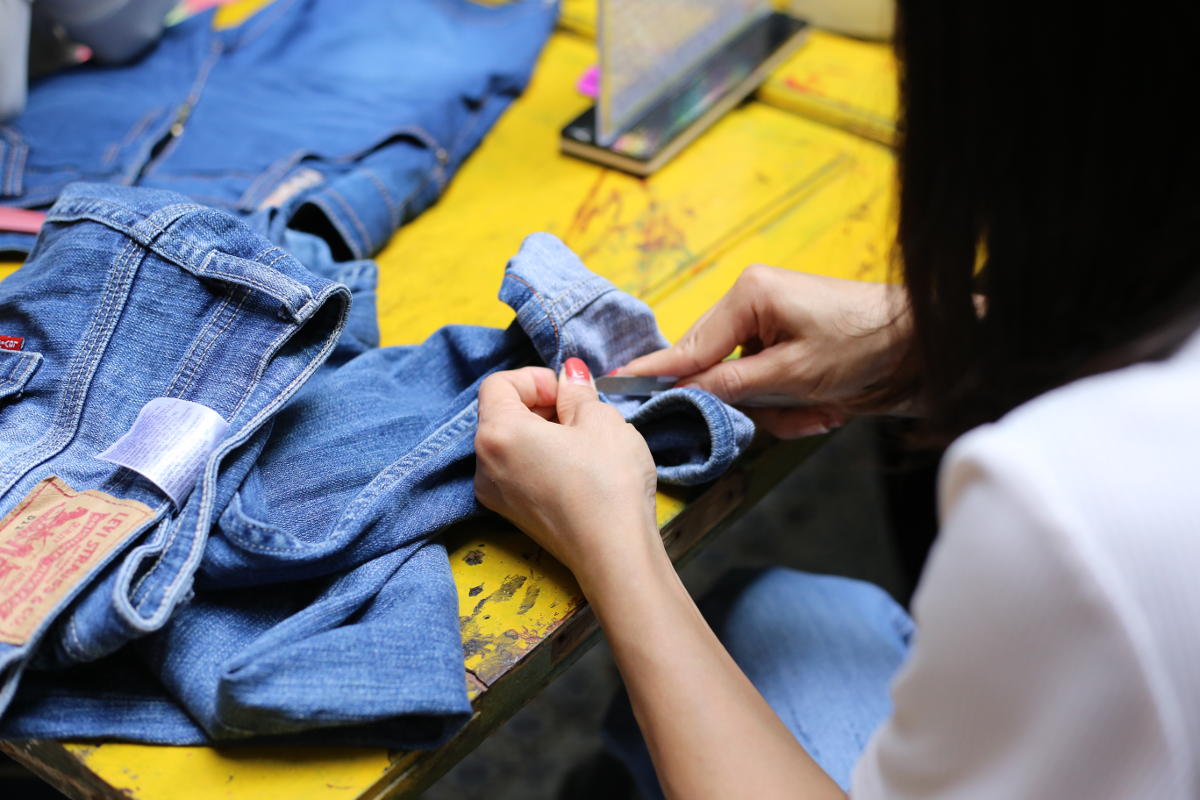
Old jeans get discarded when they start to display small faults. A loose button, a jammed zipper, a small tear... or just the need for more space in the wardrobe. But old jeans still have a unique character and that is the point where Atelier MeJe comes into play. They picked up the idea to take the old jeans and recycle, upcycle and generally breathe new life into them.
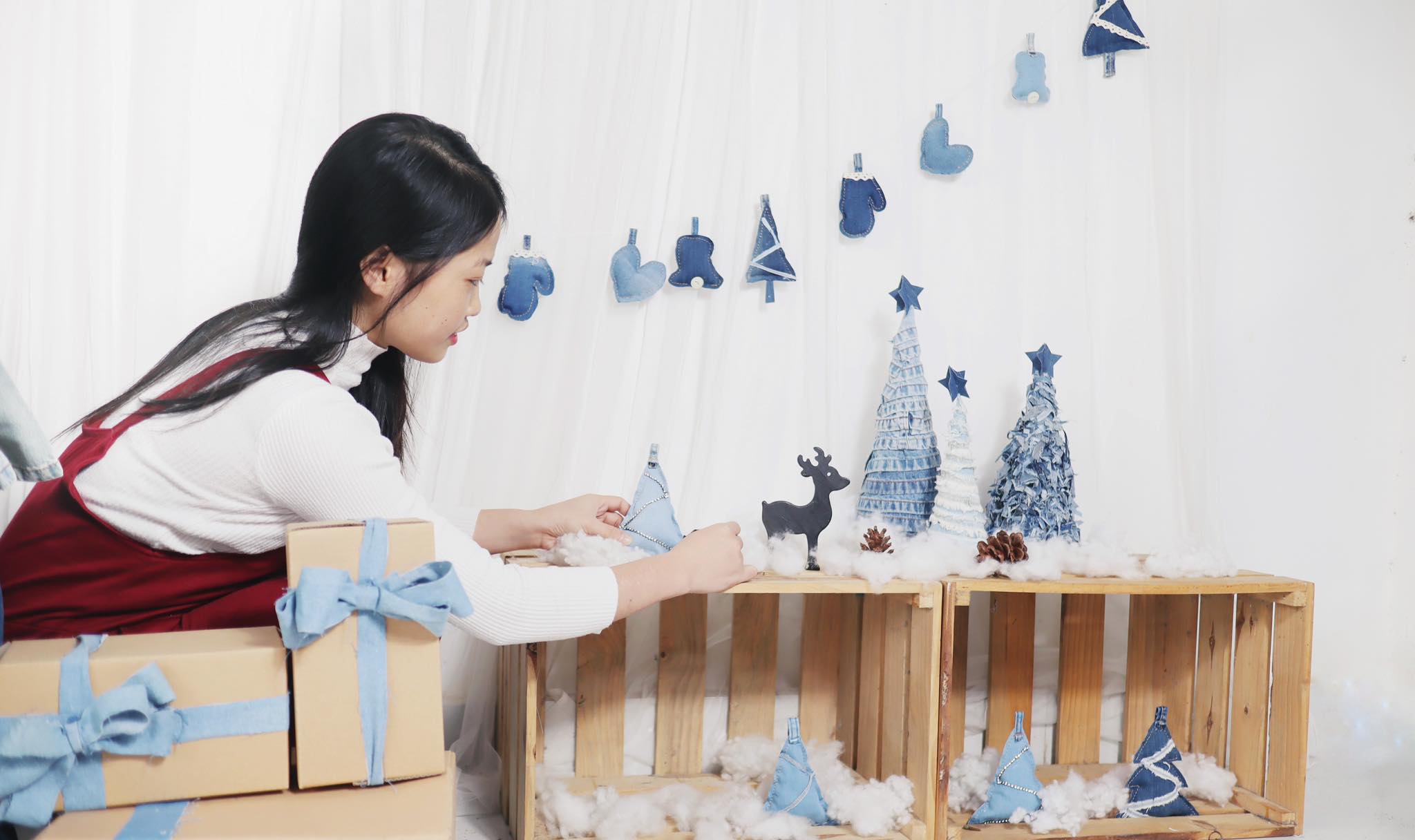
In the beginning single, environment aware people with a vision of a greener future on their mind sent their jeans to Yen instead of throwing them away. For Yen however, those old pants were not mere trash, but precious raw material displaying a very special character as well as the ability to inspire creativity.
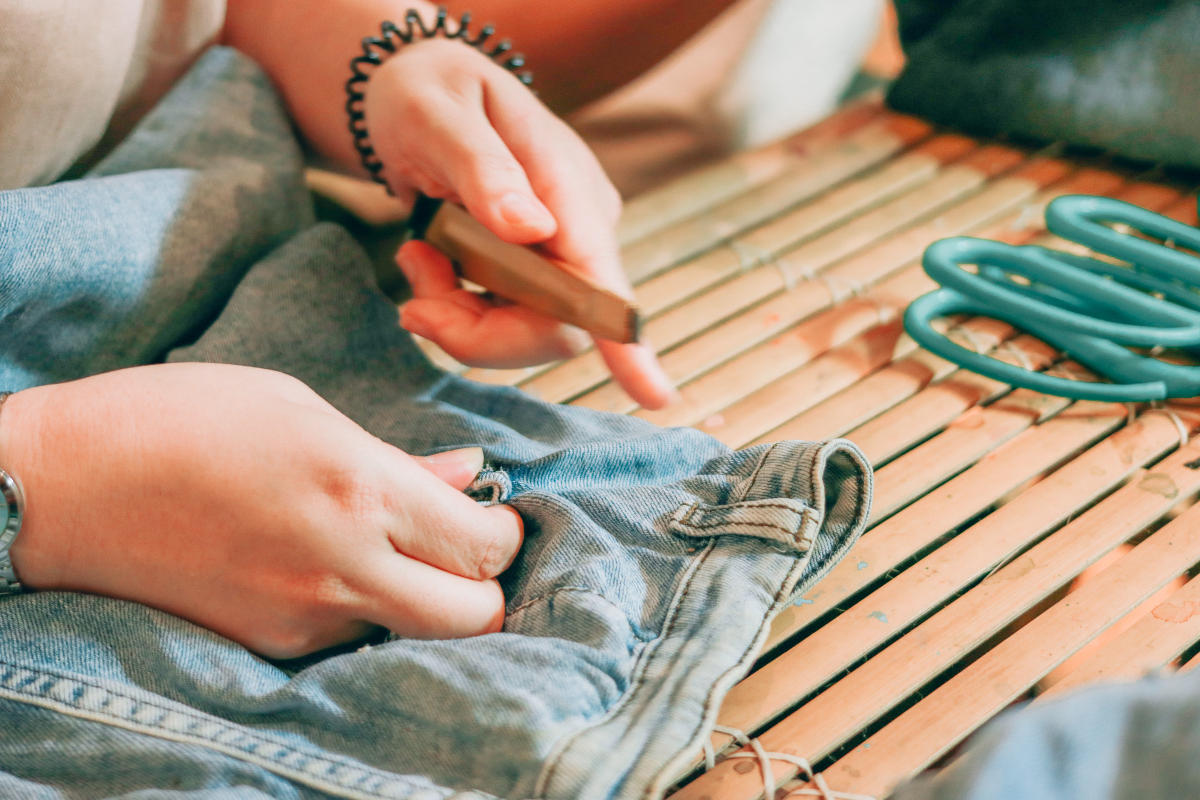
The beginning of something amazing
Originally, Yen is not from the fashion industry. She studied social work. Quite like with many of our skilled and lovely partners, it was her passion for arts and crafts - especially hand made bags - a hobby at first, but always a true companion on her path. Until this very passion stepped into the foreground.

During her time at the university she founded her brand for handmade bags, purses and backpacks. At first she bought fabric, but slowly her mind shifted - inspired by the great diversity of second hand materials, as well as her background in social work. It shifted towards a fascinating thought: How to create totally unique fashion, full of character - and at the same time fight climate change and contribute to a living, healthy society?
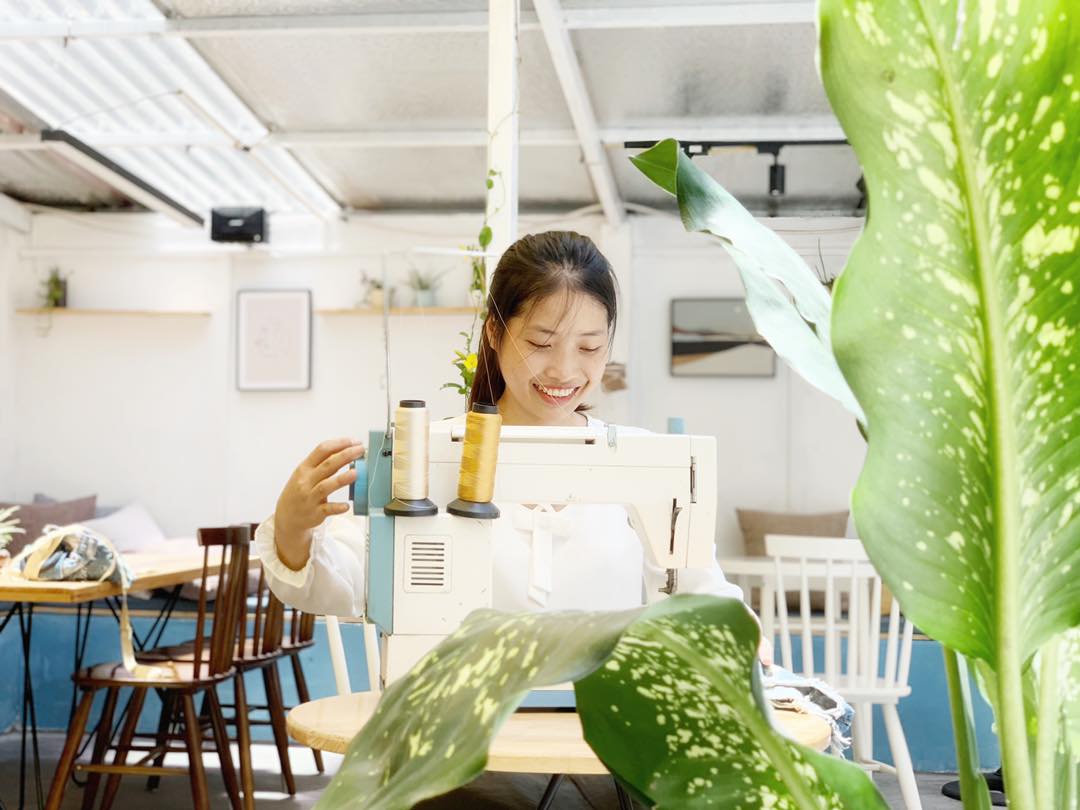
After graduating, she returned to her hometown, where it took her two years to work out the answer to this big question. Continuously, Yen was on the hunt for beautiful and environmentally sustainable fabric for her art. And then, one day, while cleaning out the good old wardrobe, she discovered some old jeans. She liked the fabric, so she immediately made a bag and presented it to her followers on social media. People were instantly hooked and she got a lot of positive feedback.
Then, people started sending in their old jeans, paired with a request to turn them into one of her lovely bags. That was the origin of Atelier MeJe, the workshop that grants old pants a new life.
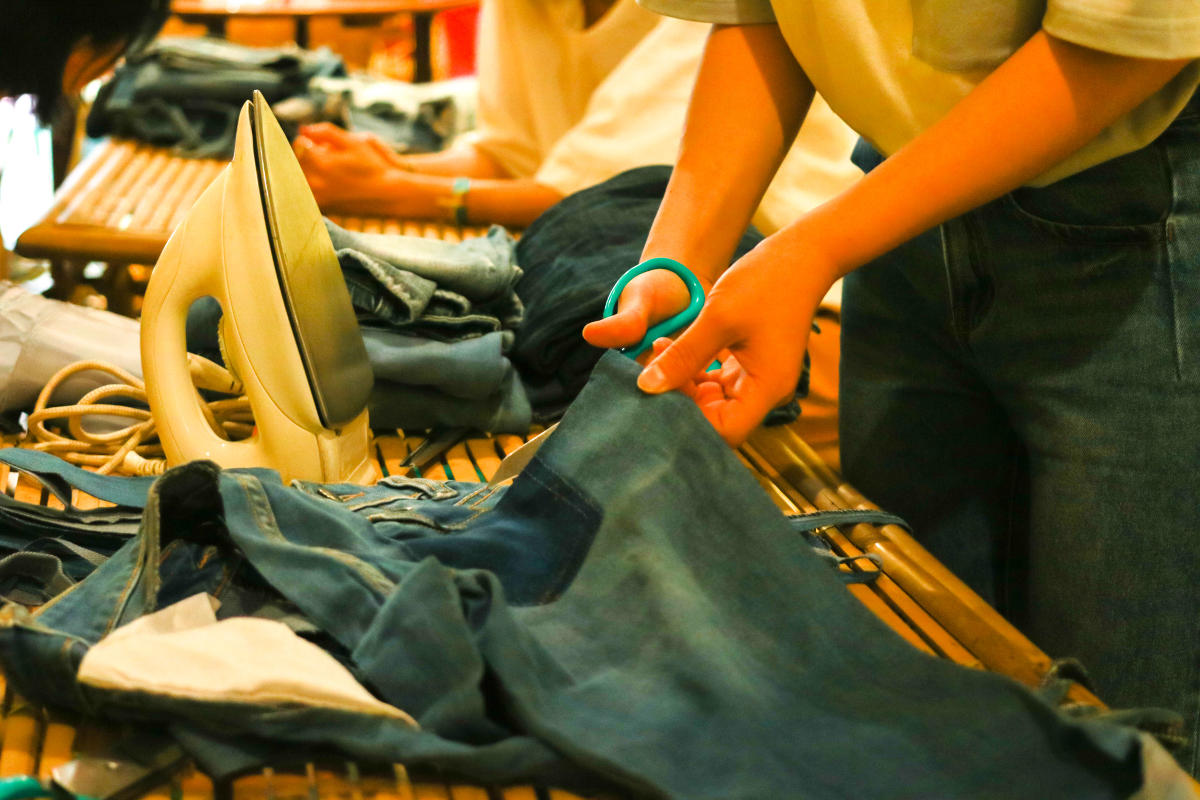
Atelier MeJe
With the help of her relatives, she realized a small workshop in Bac Giang, a town 50km north-west of Hanoi. The workshop is no dusty, noisy, dark place where you work until your fingers go numb... Nope, not at all!
Well designed, decorated and flooded with light, it is a place where every work day begins with sighting the material to start the creative process. Pockets, buttons, tears, straps and loops - may trigger a great idea and get integrated harmoniously into the design.
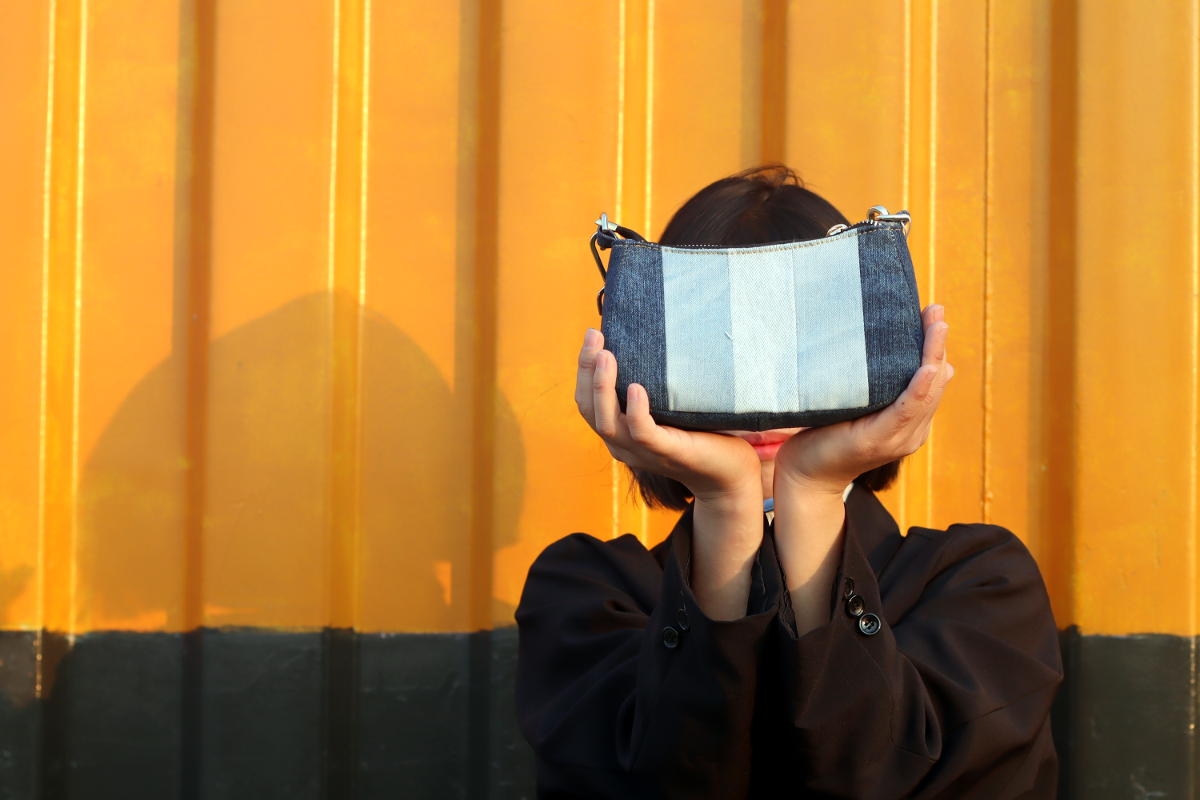
This is why a day's work at Atelier MeJe starts with old trousers and ends with a plethora of inspired creations.
How do we integrate these patches?
Where do we place this pocket?
These are questions occupying the artists - and since every pair of jeans is different from the next, every bag is different from the next. There are no two identical products, each one is telling a different story.
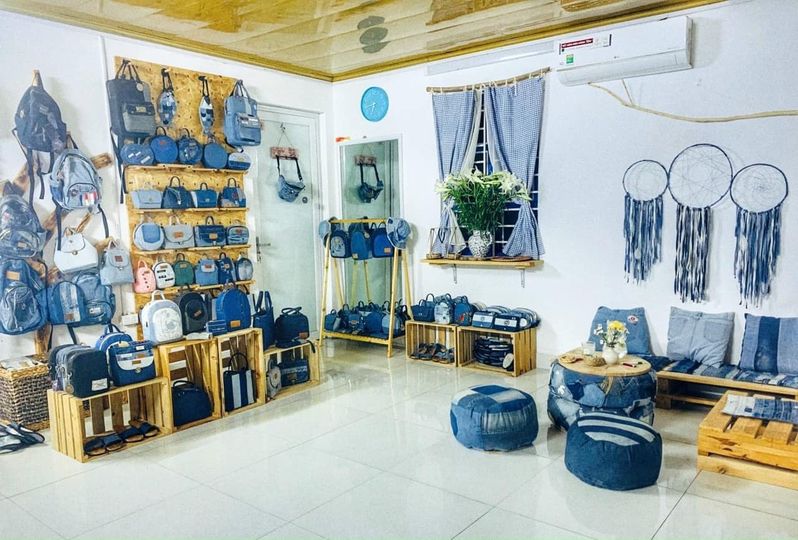
Since the establishment 2019, Atelier MeJe developed well and became known as a pioneer when it comes to reduce fashion waste and instead create creative and inspiring bags.
A MeJe bag is not just a bag, it is an idea, it is enthusiasm and a love for the future of our planet. Very much appreciated by their customers.
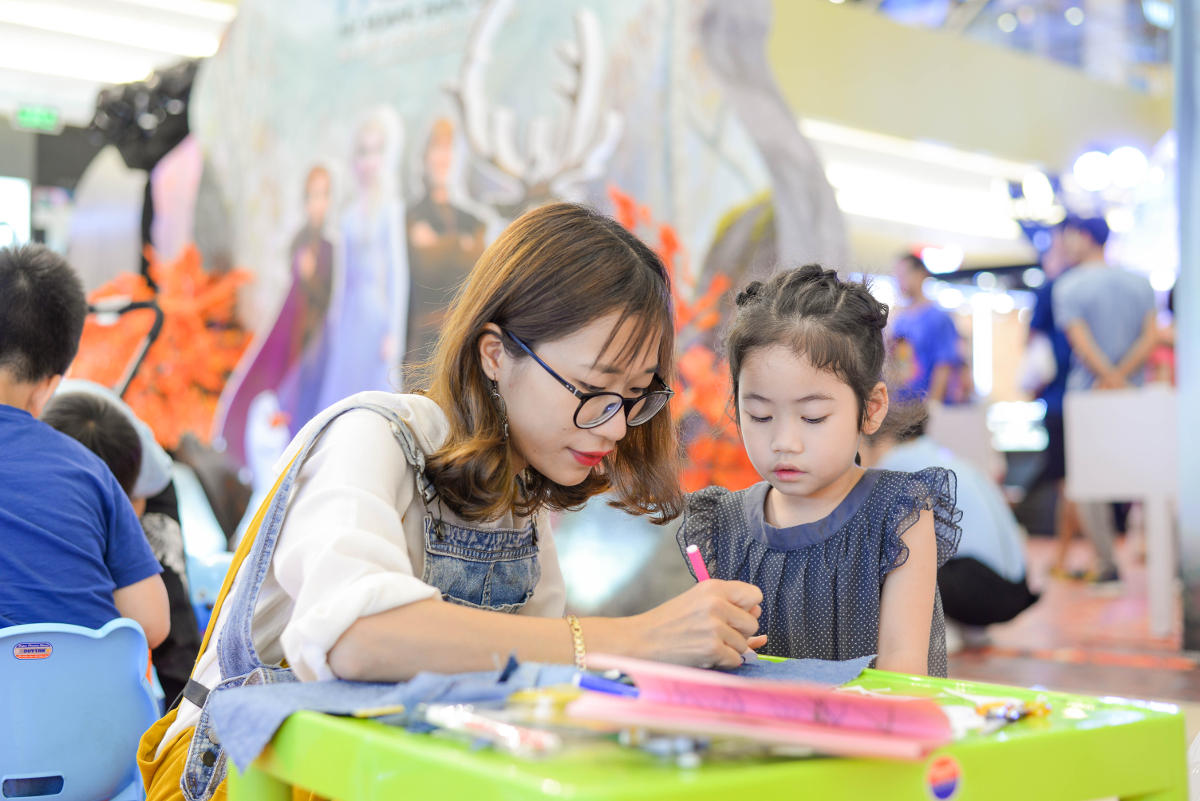
In our series of articles "From Hand to Heart" we would like to introduce not only ourselves with our little tea house and concept store in Salzburg, but also our partners in Vietnam, Italy and Austria. Because we believe that hand- and heartmade products are worth to be seen and recognized for their quality, value and sustainability.
New Articles
 | Avanova and RealiTea Avanova Design stands for handmade fashion jewellery, bags and accessories. Our physical shop RealiTea however is not only an ethnic boutique in Salzburg, but especially a tea house where you can enjoy a pot of excellent tea in our cozy corner. |
 | Leather Jewelry Artisan jewelry from vegetable tanned leather, embossed and hand painted by Dewdrop of Honey. |
 | Hand embroidered hair accessories While the spring flowers are blooming in the forest and in the garden, our shop is in full bloom too! Hand embroidered, floral hair accessories from our partners in Vietnam. |
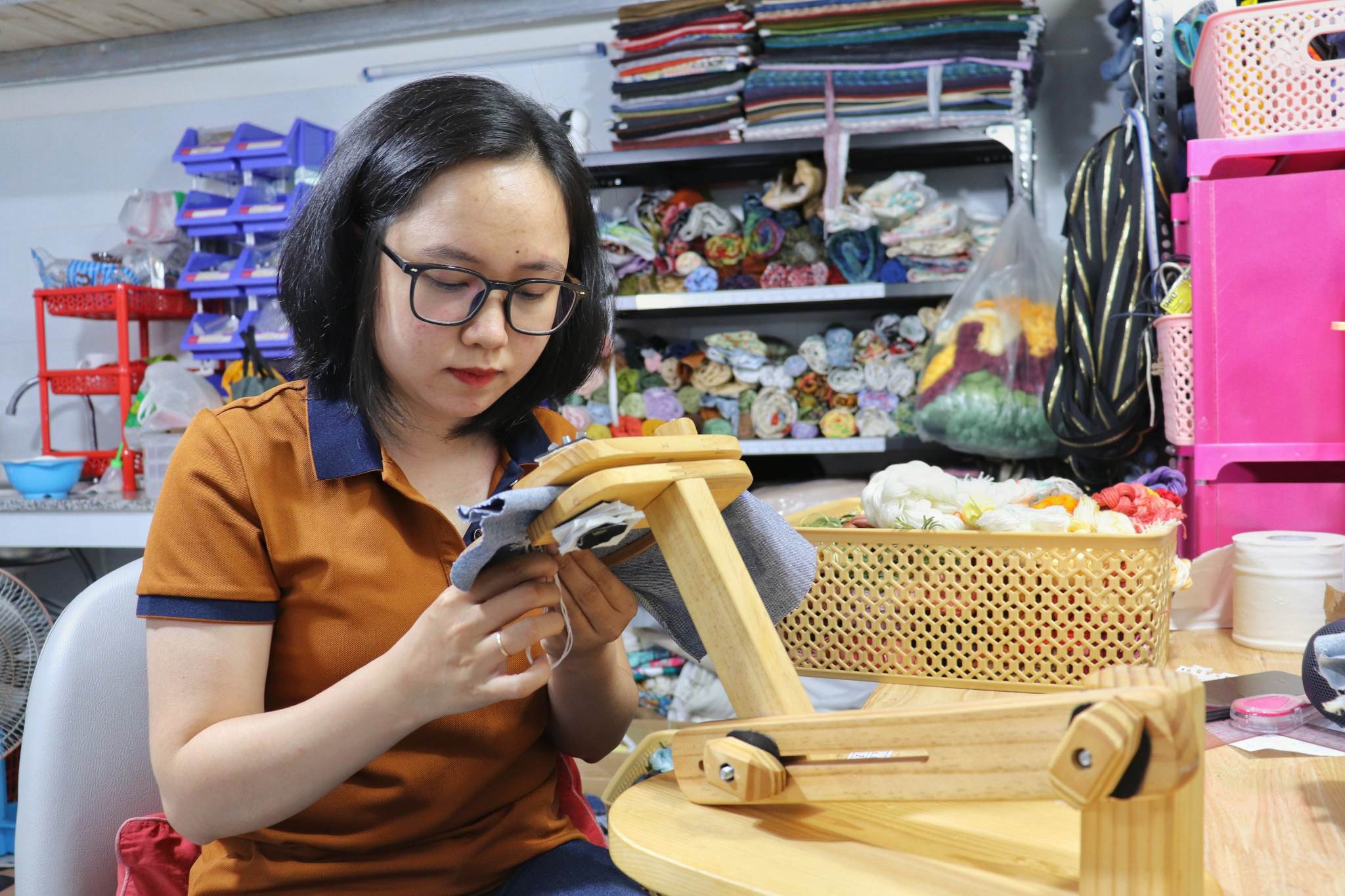 | Tadu: Turning old jeans into trendy fashion items Tham and her progressive label Tadu Bag are right on time to lead towards a bright and cool fashion epoch. In this story I want to tell you how she escaped the daily grind and stepped on the adventurous path of slow fashion. |
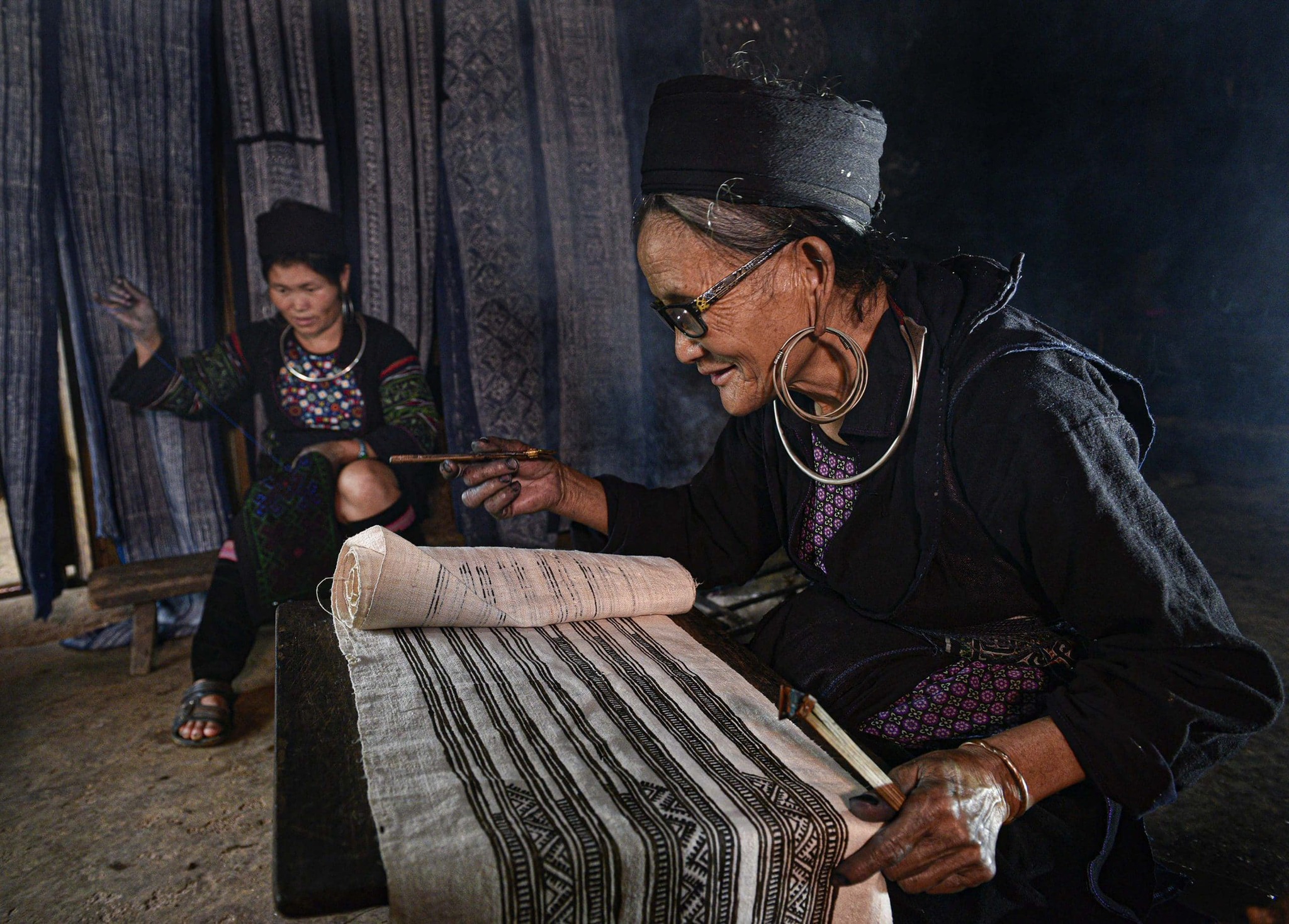 | The stunning art of the Hmong people The Hmong are highlanders from the North of Vietnam. Their traditional costumes follow an old and very complex formula of weaving, indigo wax batik and embroidery. Knowledge passed on through generations. |
 | Awakening old jeans to new life How to implement a business model, be creative at the same time, develop beautiful products and even do something beneficial for the environment? I think the artists from Atelier MeJe are on the right track! |
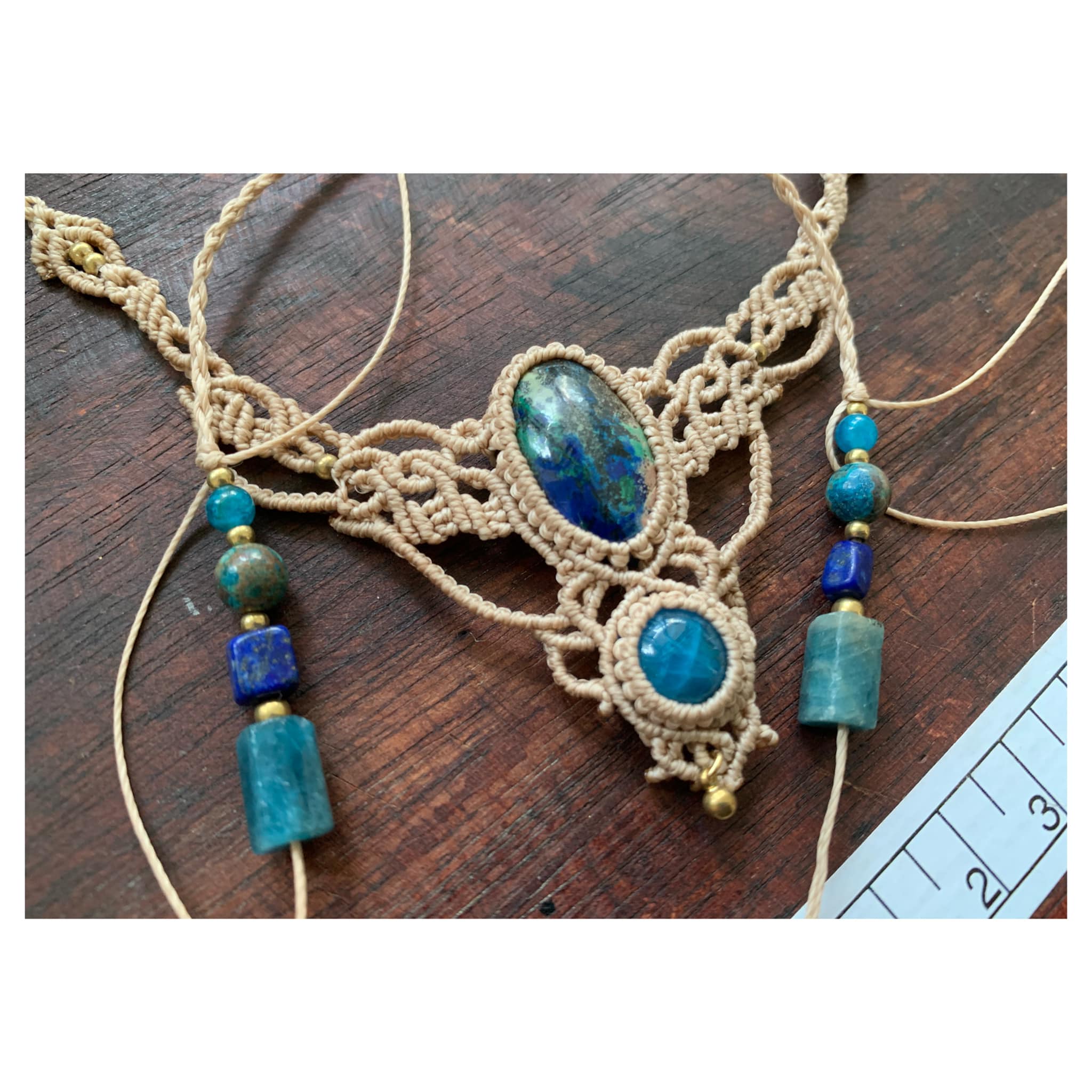 | Handmade micro macramé jewellery and shimmering insects Let me introduce Yen with her wonderful micro macramé jewellery and her shimmering insects, made in bead embroidery technique. |
